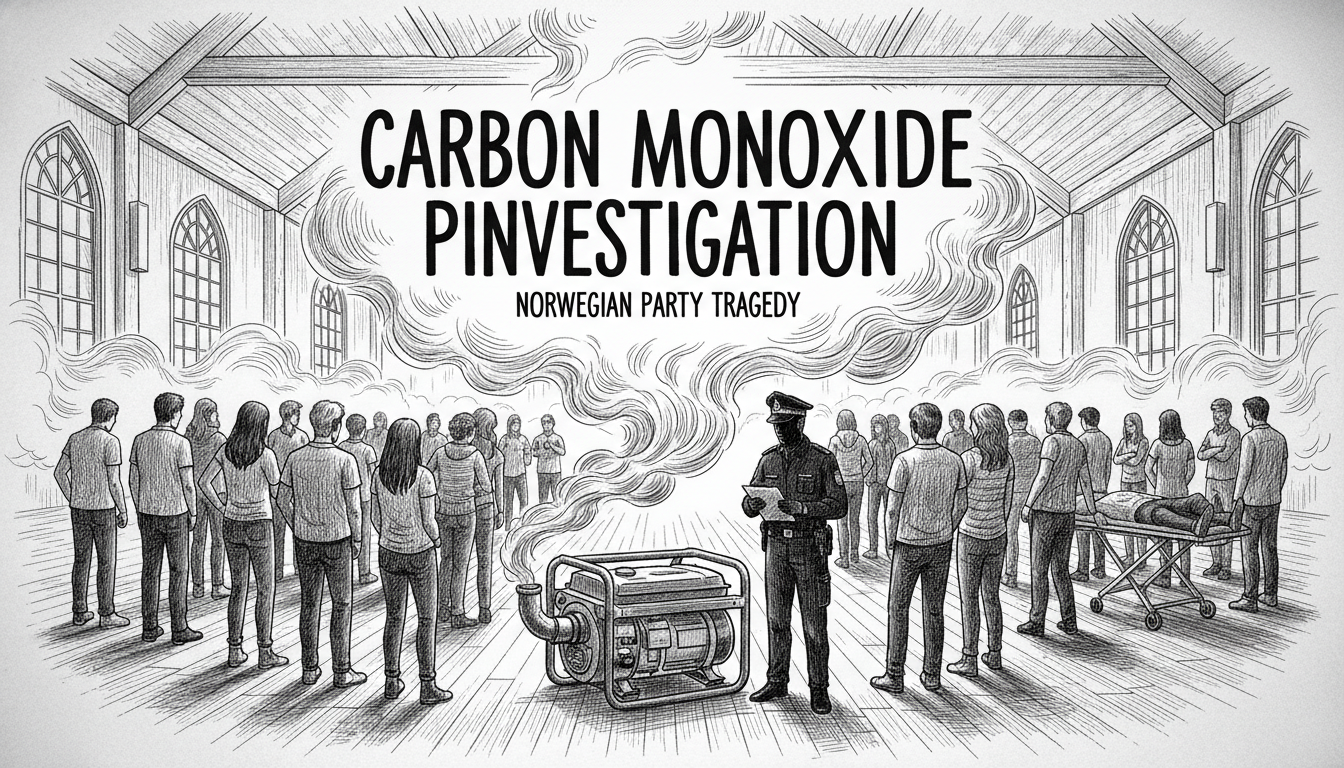A high school graduation celebration in Lørenskog turned dangerous when partygoers detected a strong gasoline odor. At least 35 teenagers required medical examination for possible carbon monoxide poisoning after attending the event at Star Palace venue.
Sixteen-year-old Mina Slettebakken described the unsettling experience. She said the air felt thick when they entered the party space. The unusual smell didn't immediately concern her, but the situation escalated throughout the evening.
"It started to smell like gasoline after a while," she explained. "Later that night, I began feeling pounding in my head and experienced dizziness. I went home thinking I had a headache from the music, but I had never experienced such severe head pain before."
Police confirmed they have launched an investigation into the incident. Three parties have received suspect status in the early stages of the probe. Suspect status indicates authorities believe individuals may have committed punishable offenses.
The party attracted approximately 300-400 attendees to the private venue. Slettebakken took pain medication and went to bed after returning home. She woke up still feeling dizzy and physically weak.
Medical officials list headache, nausea, dizziness, weakness and confusion as common carbon monoxide poisoning symptoms. Multiple party attendees reported experiencing these signs, though no one suffered serious injuries.
Authorities learned about the situation only after media reports surfaced on Saturday. Party organizers then contacted emergency services at Akershus University Hospital.
"We woke up Saturday to messages about some kind of gas leak at the party," Slettebakken recounted. "We called the emergency room and explained everything that happened. They sent us there for blood tests and oxygen masks."
Hospital staff informed attendees about a gasoline-powered generator operating inside the venue. They advised all partygoers to undergo medical checks. Slettebakken spent about two hours under observation and undergoing testing.
The party organizer told media the generator had been placed in a ventilated room as during previous events. He suggested someone left the door to that room open at some point, though he didn't know how this occurred.
"This is an unfortunate situation," he commented about the incident. He has pledged full cooperation with police investigators.
Medical authorities elevated their emergency readiness level following the incident but returned to normal operations by Sunday morning. Hospital records show 35 total admissions related to the party, with the final patient discharged Saturday evening.
This incident echoes a similar tragedy from five years ago in Oslo. Two people suffered serious injuries and 26 others required hospital treatment for carbon monoxide poisoning after a diesel generator powered a party in a converted bunker. The two event organizers received two-and-a-half-year prison sentences for their roles in that dangerous situation.
The Lørenskog case raises serious questions about event safety standards and generator usage in enclosed spaces. Norwegian authorities typically enforce strict regulations regarding combustion engines indoors, making this incident particularly concerning for local officials.
Private party organizers sometimes overlook safety protocols that commercial venues must follow. This gap in oversight creates potential risks for large gatherings, especially those organized by young people celebrating traditional events like graduation festivities.
Carbon monoxide poses particular danger because it's odorless and colorless. The gasoline smell that alerted partygoers likely came from other generator emissions, while the dangerous carbon monoxide went undetected until symptoms emerged.
Local officials confirmed the event was privately organized rather than a municipal function. The venue owner had not responded to media inquiries as of Sunday.
Despite the frightening experience, Slettebakken reported feeling fine after treatment. She described the overall event as "a bit creepy and unpleasant." The teenager expressed surprise that a celebration ended with hospital visits, noting they never expected such consequences from a party.

